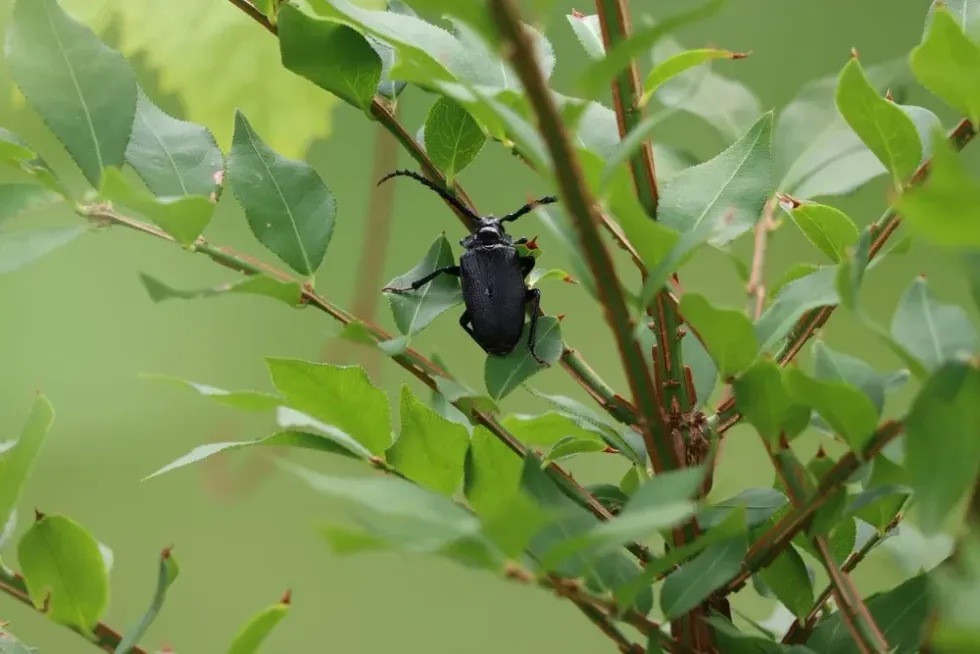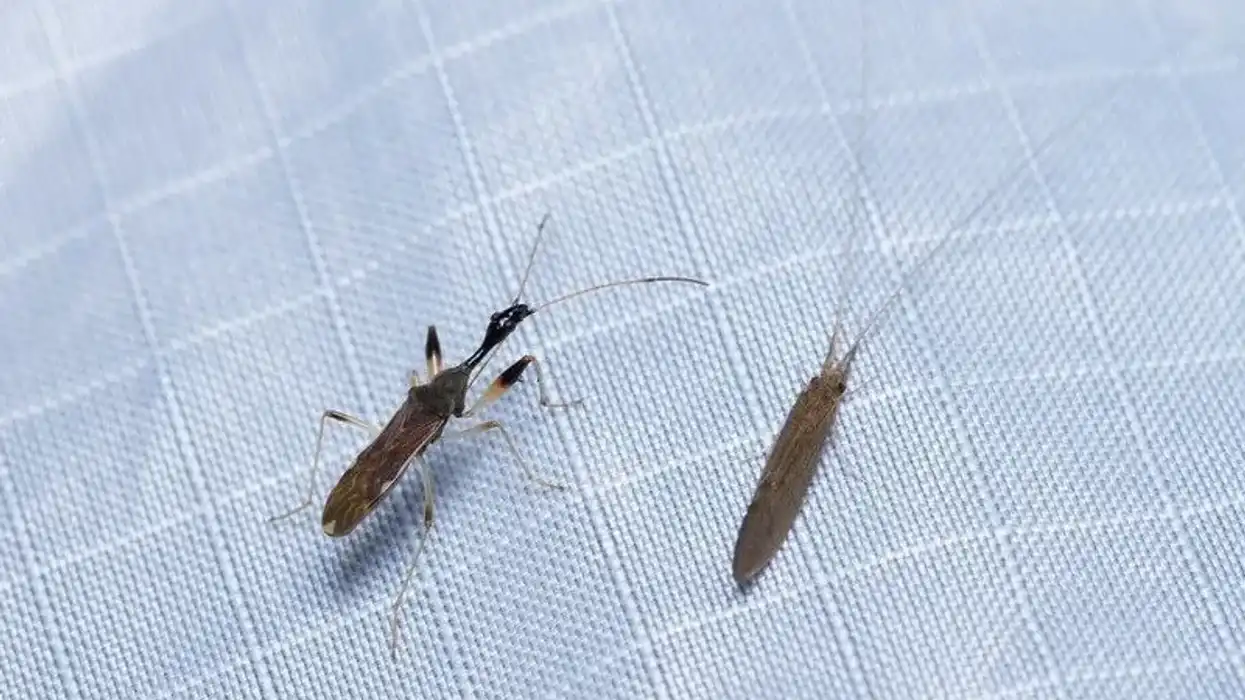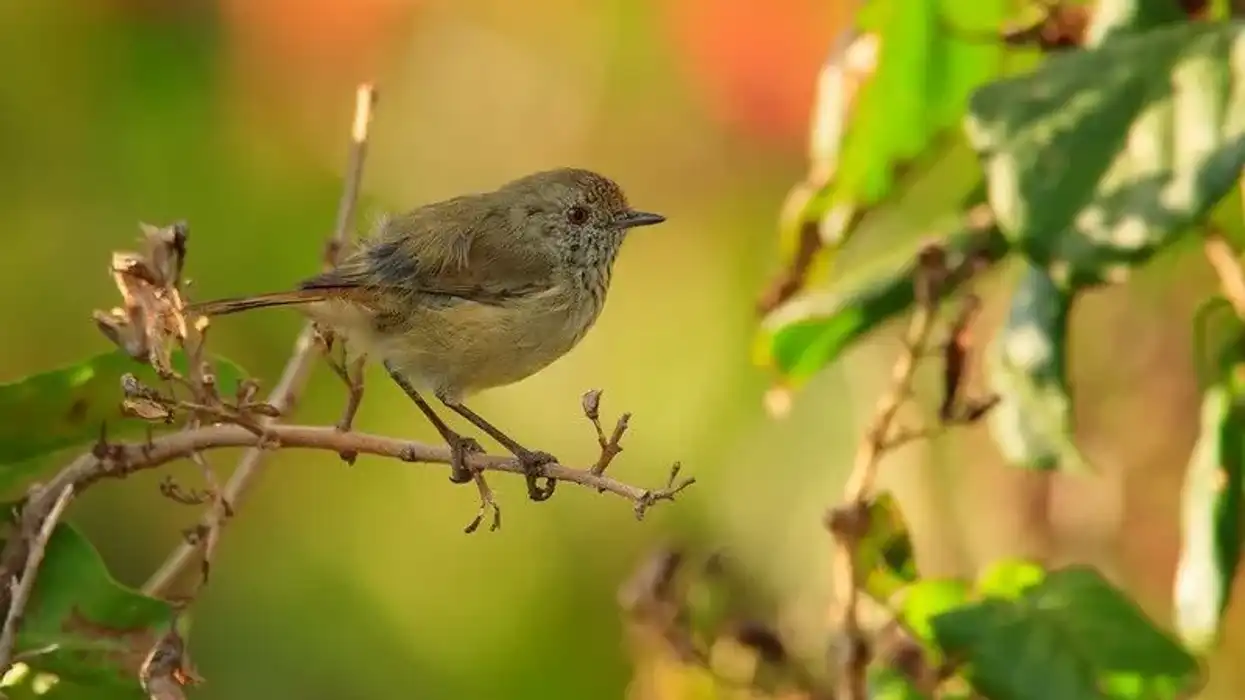The broad-necked root borer (Prionus laticollis) is a species of longhorn beetles that survive by feeding on the tree roots and tree shrubs. These creatures are well-known because they damage the forests and are good borers as they hollow out small roots for feeding.
The female broad-necked root borer beetles are easy to identify among the various species because of their ovipositor, which is the tube-like organ in some insects for laying eggs. Usually, the female is also larger in size than the male.
Although the Prionus laticollis looks kind of scary and dangerous because of its appearance, it is not harmful to humans. The studies show that this beetle does not bite or sting humans and usually stays far away from humans, minding its own business.
Here on our page, we have many amazing facts about the broad-necked root borer that everyone will enjoy. Let's look at these interesting facts; if you like these, do read our articles on the six-spotted tiger beetle and the golden tortoise beetle.
Broad-Necked Root Borer Interesting Facts
What type of animal is a broad-necked root borer?
The broad-necked root borer is a beetle species that is found everywhere near the roots and trees.
What class of animal does a broad-necked root borer belong to?
The Prionus laticollis belongs to the arthropod phylum and belongs to the class of Insecta and the family Cerambycidae.
How many broad-necked root borers are there in the world?
The exact population of the broad-necked root borer is not estimated, but they are in large growth and numbers. These creatures lay hundreds of eggs at a time, which is why they are not on the list of Endangered species and are safe in the world.
The only way that they will ever get Endangered is when all the trees disappeared.
Where does a broad-necked root borer live?
The broad-necked root borer beetle is a native of North America. This root borer is also found in the region of North Carolina and New Jersey.
What is a broad-necked root borer's habitat?
The broad-necked root borer finds its habitat where trees are found. It can be fruit trees or the living roots of trees. Most importantly, these creatures prefer deciduous trees and oak trees.
Who do broad-necked root borers live with?
The broad-necked root borer is always found living with its own species or different beetle species. Usually, these beetles are found with the root boring creatures so that they can all feed together. They are also known to lay eggs in groups with others from the species so that they can protect their offspring together.
How long does a broad-necked root borer live?
The life cycle of a broad-necked root borer is around three years of age. Their whole life cycle gets completed in these three years starting from being laid as eggs, then forming as larvae, then pupating, and finally into the adult beetles.
How do they reproduce?
The broad-necked root borer comes together and performs the mating process. After that, the female digs the tunnel where she lays eggs with the help of her ovipositor.
After the eggs are laid, with the help of her ovipositor, the female fills the hole and camouflages the eggs. After some days, larvae emerge from them and start chewing roots. Usually, the larvae tunnel downward in order to feed on living roots.
What is their conservation status?
The conservation status of the broad-necked root borer is as a Least Concern species. These species are often found in the North American regions and are in growth and abundance.
Broad-Necked Root Borer Fun Facts
What do broad-necked root borers look like?
The broad-necked root borers are large size beetles that are found in black, but their color can also be reddish-brown. These beetles have a semi-flattened body shape with large antennas than their body and the folded wings.
The antennas can have 12 segments. Females have an extra organ called the ovipositor, with the help of which they lay eggs, while the male is like a normal beetle can fly, while the females do not.
How cute are they?
The broad-necked root borers are not at all cute-looking beetles. Their appearance is kind of scary that often people think that the broad-necked root borer poisonous carrying beetles. They are not actually poisonous.
How do they communicate?
Like other species of beetles, the broad-necked root borer also communicates with each other with the help of pheromones. Pheromones are chemicals released by these insects that aid with communication. These creatures also make sounds how the flies do by rubbing their small hands together on their body.
How big is a broad-necked root borer?
The average size that a broad-necked root borer can be around 3.5 in (8.8 cm) in length. These creatures are twice the size of an Indian currency coin.
How fast can broad-necked root borers move?
The exact speed of the broad-necked root borer is not known, but they are known to move fast. These creatures do not attack humans, and they usually hide away from the humans.
How much does a broad-necked root borer weigh?
The average weight of a broad-necked root borer is up to 0.5 oz (14 g) total.
What are the male and female names of the species?
The adult does not have a specific name for the females and males. They are referred to as the male broad-necked root borer and female broad-necked root borer. They are easily distinguished as the females have an ovipositor on the lower body.
What would you call a baby broad-necked root borer?
The baby broad-necked root borer is known by various names depending on the life stage that they are in. They can be called 'larvae' when they emerge from the eggs and pupae in the next stage before becoming an adult.
What do they eat?
The root borer creature's diet consists of trees and shrubs. They also feed on fruits like pear, apple, grapes, peaches, and even blueberries. The young larvae like to feed on the fresh and live roots. They bury themselves in the soil to prey on them.
Are they harmful?
No, the broad-necked root borer is not harmful at all. Although their appearance says otherwise, they are a calm species that stay far away from humans. Though it seems like they have a stinger, they do not actually sting. The stinger is, in fact, the ovipositor and not an actual stinger in itself.
Would they make a good pet?
The broad-necked root borer could be kept as a pet because it does not need high maintenance. However, despite this, humans tend to stay away from them because of their appearance. There are, however, a few people who are into exotic pets that adopt these insects.
Did you know...
Similar to ground beetles, these broad-necked beetles are nocturnal creatures that are active at night. Another interesting piece of information is that they can survive without food for months.
broad-necked root borers and humans
To prevent the broad-necked borer away from your garden and control them from spreading, try to keep the bases of any tree clean from leaves and barks so that they cannot stay hidden there. You can also use pest netting and latex paint on the bases of your trees to keep these creatures at bay.
Trying this will help you get rid of them.
The broad-necked root borer's sight
The sight of these species of borers is very good as they are usually active during the night and early dawn, where one cannot otherwise see properly.
Here at Kidadl, we have carefully created lots of interesting family-friendly animal facts for everyone to discover! For more relatable content, check out these eastern carpenter bee facts and Miami tiger beetle facts.
You can even occupy yourself at home by coloring in one of our free printable broad-necked root borer coloring pages.










